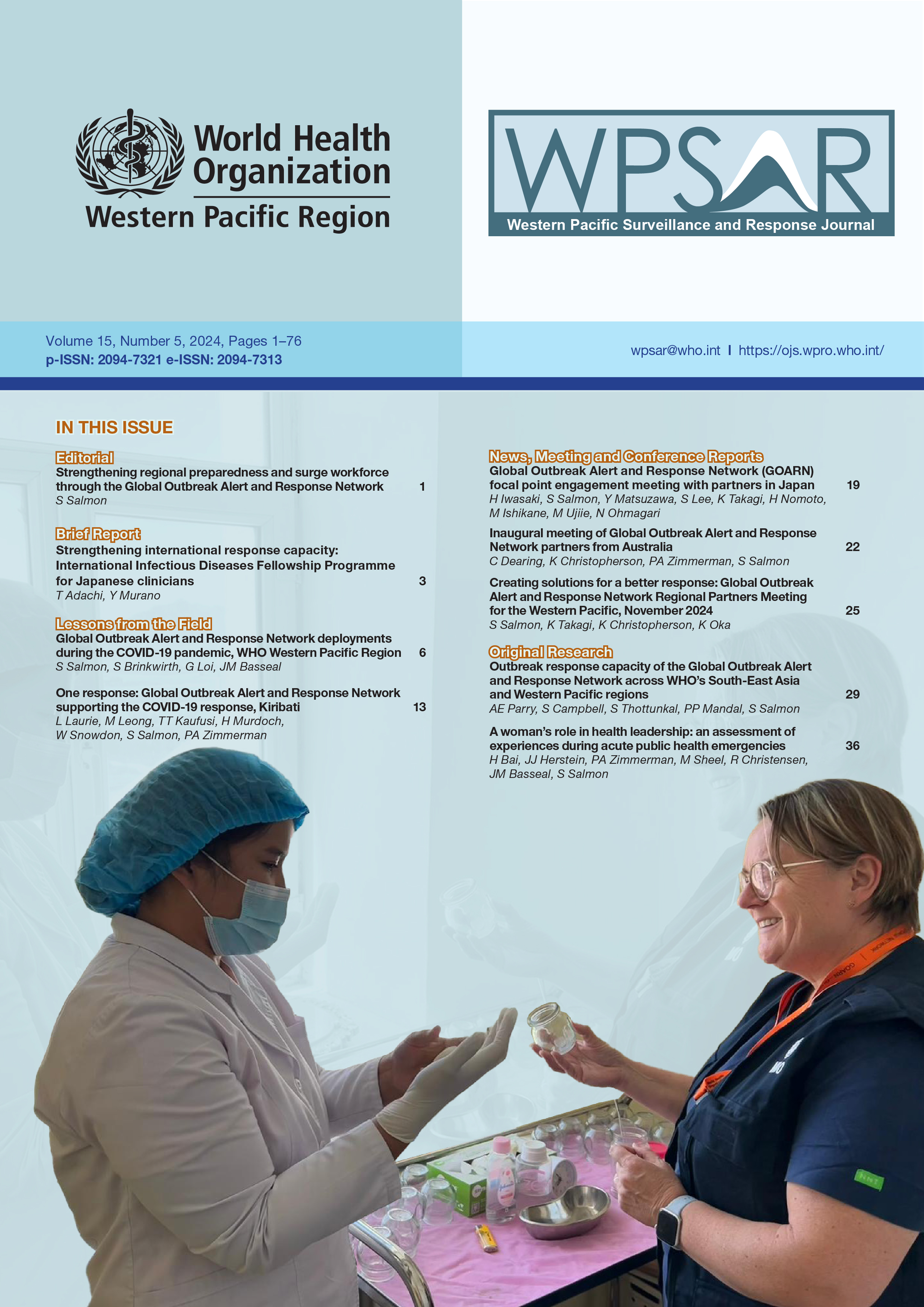Outbreak response capacity of the Global Outbreak Alert and Response Network across WHO’s South-East Asia and Western Pacific regions
DOI:
https://doi.org/10.5365/wpsar.2024.15.5.1109Keywords:
health workforce, emergencies, training programs, outbreak response, deployment, COVID-19 pandemic, Global Outbreak Alert and Response NetworkAbstract
Objective: The COVID-19 pandemic challenged the Global Outbreak Alert and Response Network’s (GOARN) mechanism used to rapidly deploy technical support for international responses and highlighted areas that require strengthened capacity within the Network. GOARN’s partners in the World Health Organization’s (WHO) South-East Asia and Western Pacific regions were engaged to explore their levels of preparedness, readiness and ability to respond to international public health emergencies.
Methods: Consultative discussions were held and a survey was conducted with GOARN’s partners from the two WHO regions. Discussion topics included partners’ capacity to support and participate in a GOARN deployment, training, research and collaboration. Descriptive and content analyses were conducted.
Results: Barriers to engaging in GOARN’s international outbreak response efforts included limited numbers of personnel trained to respond to outbreaks; institutional, financial and administrative hurdles; and limited collaboration opportunities. Partners identified innovative solutions that could strengthen their engagement with deployment, such as financial subsidies, mentorship for less experienced staff, and the ability to provide remote support.
Discussion: GOARN plays an important role in enabling WHO to fulfil its international alert and response duties during disease outbreaks and humanitarian crises that have the potential to spark disease outbreaks. Yet without systematic improvement to strengthen national outbreak capacity and regional connectedness, support for international outbreak responses may remain limited. Thus, it is necessary to integrate novel approaches to support international deployments, as identified in this study.

